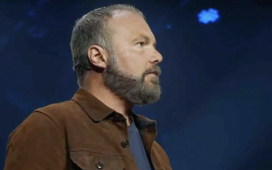My desire to live in Rome germinated on a European holiday almost 20 years ago. I exited Trastevere train station, bleary eyed after the long-haul flight, and was instantly revived by the sight of women in tight skirts and stilettos zooming past on their Vespas. Men at the local bar made fun of my Italian pronunciation. Come si dice ‘tre’? they would tease each time I turned up to buy tram tickets or the paper. How do you say three? Tre, trre, trrrrrre, I’d sputter, trying desperately to roll my Rs.
Last year my fading dream of living in Rome for more than a tourist heartbeat came true. Scrolling listlessly through emails after a night out, I found one from the Australia Council for the Arts with the subject heading: Grant Notification. It could only be a fail. Wouldn’t there be trumpet blasts and marching bands, a phone call at least, if I had passed?
What do we dream of when we dream of Rome? I asked myself this late last year when we could still permit that fantasy. We dreamt of Hollywood and Cinecittà. Audrey Hepburn and Gregory Peck effervescing through the city on a scooter. Anita Ekberg’s abundance promising to cascade from her strapless black dress as she bathed in the Trevi Fountain. Even before the virus dispersed the crowds, machine-gun toting soldiers and local police patrolled the Trevi and people swarmed like ants to honey, forbidden to emulate Ekberg. Seems such a minor constraint now that half the world is in lockdown.

I see the Pope walking unencumbered on Via del Corso, a desolate figure, bodyguards three steps behind, in a street where until recently shoppers jostled for space on a footpath as narrow as an alpine track. The Holy Father visits the church of San Marcello to pray for a miracle before the 14th-century crucifix that the devoted believe saved Rome from the plague in 1522. An image more unreal than anything we acknowledge as cinematic.
Now we have all the time in the world, and I dream of the day when Rome again can be our fierce and carefree muse. Let me remember the city as I left it: a baroque wonderland, writhing with sculpted carnality, a city charged by the friction of the sacred and the profane: bare-chested gods and goddesses, loins loosely swathed, lounging on street corners; in churches, the pious throwing back their heads in curious states of ecstasy. Bernini, Borromini, Caravaggio, Michelangelo, Raphael, Reni, Titian – on and on … And there was never enough time. In this city out of time, the present humbles itself before the relics of a miraculous, everlasting past.
In the 17th and 18th centuries, privileged young British men headed to Rome as part of their grand tour of the continent, seeking to refine their taste and cultural knowledge at the epicentre of western civilisation. They went to study antiquities, paintings, architecture and “the other arts which are found in such great perfection at Rome”, as one of these grand tourists, James Boswell, the celebrated biographer of Samuel Johnson, wrote in a letter to his friend Jean-Jacques Rousseau in 1765. Towards the end of his time in Italy, Boswell was satisfied that he had “acquired taste to a certain degree”. He found time to “indulge in sensual relaxations”, be presented to two cardinals and kiss the pope’s toe.
Almost two centuries later, the cultivation of taste remained a quest for the nascent Australian art critic Robert Hughes, whose adolescent self had longed for Rome. There he would learn to distinguish good art from bad. “As far as I could discover there was not one work of religious art in Australia that anyone except a weak-minded nun, and a lay sister at that, could call authentic,” the older Hughes reminisces with typical bombast in his hefty 2011 book Rome. “Where could one see the real thing?” he continues. “Clearly, only in Rome.” How would the young Hughes know if feeling in religious art was authentic? “By going to Rome … Rome would be my entry-door to Italy and then to the rest of Europe. And with that would come sophistication and taste and possibly even spirituality. Not to mention all the other earthly delights I was looking forward to. From this distance I am embarrassed to admit that I can no longer remember their names, but to me they looked just like the girls I saw in Italian movies.”
***
In August 2019, a week before our departure, a friend of a friend, a Roman-born author, comes to our home in Hobart and I show her around. We go for long mountain hikes, eat at a pub, see a film. She loves Hobart and talks about moving here. The air is clean, the scenery beautiful, the people kind.

“Rome is awful. You should be going to Milan,” she scoffs.
Milan’s contemporary art scene is flourishing, Rome’s cultural cachet belongs to the past, she says. The metro doesn’t work. There are too many tourists. The city is chaos. I want her to stop. I search online for news on Rome and see a city choking. Experts warn of health risks as rats and wild boars rummage through the waste on the streets in record summer heat. Politics too is on the boil with Matteo Salvini, the leader of the far-right Lega, plotting to force a snap election he is confident he will win. The polls show his popularity at 39%, enough to secure power.
I’d been so excited about this residency. Now, I’m beginning to wonder.
We arrive on a steaming hot day, the air thick with the scent of sewers and decay. The usual hustle for a cab outside the airport. Queues don’t come naturally in Italy. A man signals and we start lugging our suitcases to a taxi. No, wait. Another vigorous wave and we’re redirected to another car. We shove our luggage into the boot, get in and zoom down the autostrada in the sticky heat, storm clouds rising into billowing towers. The driver says his credit card machine isn’t working. He detours to a bancomat and waits while I retrieve euros. I will encounter many more broken credit card machines during my five-month stay, and the inevitable request for cash. Sights flash past. Rubbish collects in gutters, litter spills from over-stuffed communal bins, pigeons scavenge among fallen, leaking garbage bags. People walk casually past the trash, a symptom of ineffectual politicians and waste plants straining for space. La grande bellezza is looking like shit.
I call my mum. I tell her she and Dad made the right choice moving to Australia. I launch into everything that’s wrong with Rome. I tell her about the garbage, the broken footpaths, weeds flourishing in the cracks, the grime that gathers in my throat, how I go outside and come back wheezing, how everyone smokes here, cigarettes dangling from their mouths and fingers as they walk the streets, how they ride their bikes on the footpath without helmets and constantly run red lights. She laughs and says: “But it’s still Rome!”

Within days I fall for it again. My emails back to friends in Australia become a euphoric, hyperventilating rush of contradiction. The city repels and seduces; it fascinates and frustrates. I am mesmerised by the texture of walls, the silhouettes of umbrella pines, mysterious grottoes in the dusty gardens of noble villas, peach sunsets reflected in the Tiber, rain on cobblestones. Rome is in a spellbinding state of neglect – trascurata, as a local beautician puts it. I later see her smoking at the threshold of her salon. She flicks her butt into the gutter.
An American professor who has lived here for many years tells me Rome is “exhausted”. All of Europe is, he says. I can feel the exhaustion, but I also feel a great sense of relief and liberation living in a city where I don’t need to justify my preference for wandering quietly through museums over shouting at sports stadiums. While I’m in Italy, the Australian prime minister, Scott Morrison, purges the word “arts” from his ministerial departments. From the standpoint of Rome, where art is life, the move seems absurd. In Australia, art is suspect and subject to the contempt of those who view it as an indulgence of the left, or the pastime of the pretentious and politically correct.
In late 2019, all the museums in Rome are open. A book in our apartment lists them. I lose count after 60. I gorge on art. In Rome, we are all grand tourists.

At the Vatican, Caravaggio’s The Entombment of Christ brings me to tears. I am not religious. But in Rome I grow weak at the smell of incense, the sound of Gregorian chants; on vaulted ceilings trailing flowers and vines of gold, winged cherubs clinging to these celestial gardens. I flirt with the idea of returning to the church. I know I’ve looked at one too many paintings of the Madonna when, filing my thumbnail into a gentle curve one evening, I see the bowed, veiled head of the Virgin Mary.
***
We live on the Viale di Trastevere, where my dream began, up the dodgy end with the drifters and beggars, near the train station. Elegant older palazzi clash with ugly, newer apartment blocks, and the discount stores and grocery shops of extra-communitari, as people of non-European heritage are called here. We’re on the eighth floor, in a humble oasis with a huge terrazzo from which we look out on to the terracotta-coloured houses of Monteverde across the way and down into the canyon of traffic below.
I have the Australian artist Lorri Whiting to thank for this writing sanctuary, and thank her often I do, turning towards the large, blue, abstract painting in the studio, one of Lorri’s works that radiates with her spirit. I had not heard of Lorri before this residency. I’m not alone in that ignorance. I wonder how this could be, as she’s the sister of Malcolm Fraser, one of Australia’s most polarising prime ministers, who was reviled for his role in the dismissal of Gough Whitlam, but whose reputation was restored following his compassionate welcoming of refugees fleeing Vietnam.
Lorri left Australia in 1955 with her husband, Bertie, a poet and journalist, and never returned. In Waves, Mountains, Wings and Sails, Kevin Brophy’s subtly crafted 2019 essay on her published in Westerly, he recounts that in Rome the couple felt they found people “a bit like us, artists and writers”. This studio is their former home. After Bertie died in 1989, Lorri donated it to the Australia Council, to nourish a new generation of Australian poets and writers. In the kitchen-living room a big, metal plaque commemorates her gift with these words: “Faith in new ideas and faith in talent are the lifeblood of a nation’s future.”
Lorri and Bertie’s book collection lives on in the apartment. Robert Hughes’s Rome is here, Boswell’s diaries, and every writer who stays is invited to leave a copy of one of their own books. So the library and its connections grow. On well-stocked shelves I find old catalogues of exhibitions Lorri held in London and Rome. In one I read that she was a difficult and strong woman; in another that her canvases were like “so many crimes of passion”. I like the sound of her very much. I know she is living on the west coast, at Orbetello, about a two-hour drive north of Rome. I find her on Facebook and send a message, hoping to meet her. She doesn’t reply. In September, just three weeks into my residency, I receive an email from the Australia Council. Lorri has died. She was 92. We attend her funeral at the non-Catholic cemetery in the Roman neighbourhood of Testaccio, and watch as she is buried alongside Bertie, near the resting place of the Marxist philosopher Antonio Gramsci. The poets Keats and Shelley are interred here too.
***
Late one night, after straying through a glitzy wine-tasting affair in Rome’s luxury shopping precinct (where I discover that a jumper can cost upwards of 2,000 euros), we meander home. My partner photographs me in front of Bernini’s Barcaccia Fountain, which is shaped like a ship and also named for one. Behind me the Spanish Steps glow red, illuminated for the harvest festival. Gorgeous young things are draped on the steps and fountain. The early October night pulsates with warmth and light. The scene is a like a stage set. I am wearing a silver-sequinned tank top that sparkles like the water in the fountain.
I have the urge to post the photo on Facebook. I hesitate. How would I caption it: La Dolce Vita?

***
“Australia is paradise,” says the owner of a gym when I tell him where I’m from. “It’s every Italian’s dream,” he says. At the Testaccio market, where I buy sprigs of eucalypt to remind me of home, the florist confides that he wishes he’d left for Australia in the 1960s as he’d planned. He rails against the ladroni (thieves) who govern Italy.
When paradise burns in the summer’s bushfires, everyone offers their condolences.
***
A city operates on discrete levels – the tourist’s fantasy and the resident’s reality. A Roman urban planner laments the city’s poorly maintained infrastructure and the daily struggle of workers who depend on a fickle public transport system. She jokes about the hi-vis orange plastic fences that appear around collapsed walls and roads – and remain indefinitely. On the nightly news I see the same problems that I see at “home”. Online retail killing bricks-and-mortar shops. Men killing their spouses. Climate change killing the planet. Clerical abuse of children. The rise of racism, antisemitism and the far right. Some problems are graver here. This country is western Europe’s most polluted. Youth unemployment is close to 30%. The mafia mutate and spread. Refugees and migrants stream across permeable borders, arriving by sea and land. Many don’t make it. The coronavirus has yet to hit and, when it does, Italy is pushed to the brink of collapse. Other emergencies slide down the news agenda. The country is in triage, battling an invisible, terrifying enemy that eclipses all else.
Before the pandemic, it was still possible to notice other things. As in Australia, politicians climbing to success on an anti-migrant stance. When Salvini’s plan to force an election backfired, he called on his supporters to descend on Rome, echoing a fascist past. In late October they do, and I avoid the square where the demonstration takes place, watching it instead on the evening news. I see the same old slogans trotted out by populists everywhere: Orgoglio Italiano. Italian Pride. Prima Gli Italiani. Italians First. A Salvini supporter holds a placard that reads Io Sto Con San Salvini. I’m with Saint Salvini. Another holds a crucifix alongside the Italian flag.
But the glamour in the scene is uniquely Italian. A loyal Salvini fan waves her large Lega flag, which shimmers with 3,000 Swarovski beads that she has attached by hand. She is a stark blonde of senior years, with liver-coloured lipstick and black kohl ringing her blue eyes. In the coming months, I will wonder where she is. By March 2020 there is a new slogan, by government order: Cura Italia. Cure Italy.
***
On Christmas Eve, at a dinner hosted by a Roman friend, a thoughtful man with a serious manner asks me what it’s like to live in a country with no history. I curb my surprise. His question is genuine and he means no disrespect. I explain that Australia has a deep and long history, the history of its Indigenous people, the world’s oldest surviving culture and one that predates that of ancient Rome by tens of thousands of years. He acknowledges this and modifies the question. But what is it like to live in a country with so few manifest signs of the past? I try to explain that the past reveals itself in other forms, and in a landscape beautiful and haunted. I tell him that other things fill my spirit in Australia: nature, space, sky, the power of the land, and that these are the things I miss in Rome. Sometimes desperately. I’m not sure that I convince him. His question resonates for days.
***
Couldn’t I have stayed at home to write? It would never have been the same.
Rome unsettles and provokes. It leads me down new paths, propelling what I write and how I write. It holds up a mirror and tests the stories I tell myself about Italy. My bond is a complicated one; my family originates from Istria, a beautiful peninsula on the Adriatic, a place of shifting borders and complex politics, which Italy was forced to cede to Yugoslavia after the second world war. As children, my parents found themselves a minority in someone else’s land, governed by a new regime, their native Italian replaced by a strange new language they had to learn. Many of their friends began to leave, fleeing over the redrawn border to Italy. As young adults, my parents left too, by bus, with their day passes and the clothes on their backs, abandoning their belongings, their houses, their land. They spent four months in a refugee camp in Cremona before moving to Trieste, where I was born. As the pandemic forces the closure of borders around the world, I think of the rupture my parents endured, and that of millions of refugees since, displaced by ideology and war.
***
In Rome, I cried in front of Caravaggio’s dead Christ, overcome by the work’s devastating brilliance. Back in Hobart, I cry at another spectacle of light. The River Derwent, as smooth as shot silk. The sun, piercing through a break in the clouds, forms a blinding halo of light on the water.
“I can smell eucalypts!” I say ecstatically as the cabbie lets us out at the top of our steep driveway. The cabbie smiles shyly. The air is so clean I breathe it in with great big greedy gulps. But the first week back is hard. I watch the Mona ferry creep up the river, then I watch it creep back down. Time crawls and the immensity of the space around me makes me panic. I’m craving a fix of baroque art, a shot of a Roman accent, the flurry of a big city.
I visit the Hastings Caves in the Huon Valley. In cathedral-like chambers stalactites sparkle like chandeliers and form delicate curtains and shawls. They remind me of the soft drapes of a Bernini sculpture, but precede it by thousands of years. A stalagmite that looks like a giant veiled figure evokes the sculpture of a vestal virgin that I saw at the Palazzo Barberini. Another woman on the tour says that a stalagmite reminds her of a fertility goddess. I silently cheer.
***
I write now in late March 2020. The Mona ferry is no longer the metronome to my day. Mona is closed, as are all of Rome’s museums. More than ever I feel I am living between worlds: the relative peace of Hobart and the tragedy unfolding in Italy. Every day brings more dead than the last. I watch footage of military trucks transporting bodies from the worst-hit areas, where mortuaries can no longer cope. But there are hopeful images too: Italians will not renounce il bello – beauty. On balconies, people gather to sing popular Italian songs and opera arias; even the tone-deaf are tolerated. Others play instruments – trumpets, guitars, flutes, tambourines – and hang banners of rainbows with the words andrà tutto bene. Everything will be all right.
I’m not so sure. We share a common dream now. An unforeseen beauty that transcends landscape and age. A return to the everyday, no matter how ordinary.
• This piece is republished with permission from GriffithReview69: The European Exchange, edited by Ashley Hay and Natasha Cica, and published in partnership with the Australian National University




